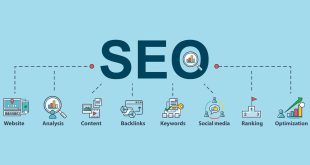Understanding the Basics of 3D Animation
Before diving into what makes a 3D animation project successful, it’s essential to understand what 3D animation is. Unlike 2D animation, which is flat and only has height and width, 3D animation adds depth, creating a more lifelike representation of characters and environments. This type of animation involves creating models in a three-dimensional space, allowing for more realistic movement and interaction within the environment.
The Importance of Pre-Production Planning
One of the most critical stages in any 3D animation project is the pre-production phase. This stage involves planning the entire project, from conceptualization to the final output. A well-thought-out plan can save time, resources, and potential headaches down the road.
- Concept Development: The first step in any 3D animation project is developing the concept. This involves brainstorming ideas, defining the project’s goals, and deciding on the story you want to tell. A clear and compelling concept is crucial for keeping the project focused and aligned with the desired outcome.
- Storyboarding: Once the concept is in place, the next step is storyboarding. Storyboards are visual representations of the narrative, showing how each scene will unfold. They serve as a blueprint for the project, helping to identify potential issues early on and ensuring that the story flows smoothly.
- Scriptwriting: Alongside storyboarding, scriptwriting is essential. The script details the dialogue, actions, and emotions of the characters, guiding the animators in bringing the story to life. A well-written script can make the difference between a mediocre and a memorable 3D animation project.
- Design and Modeling: The design phase involves creating the characters, environments, and props that will be used in the animation. This is where the project’s visual style starts to take shape. The models are then created in a 3D space, ready to be animated.
Choosing the Right Tools and Software
The success of a 3D animation project also heavily depends on the tools and software used. With numerous options available, selecting the right ones can significantly impact the quality and efficiency of the project.
- 3D Modeling Software: Popular 3D modeling software includes Blender, Maya, and 3ds Max. These tools allow animators to create detailed 3D models, offering a range of features for texturing, rigging, and sculpting. The choice of software often depends on the project’s complexity, budget, and the animator’s familiarity with the tool.
- Rendering Engines: Rendering is the process of converting the 3D models into 2D images or videos. High-quality rendering engines like V-Ray, Arnold, and Redshift are essential for producing realistic visuals. The choice of rendering engine can affect the final output’s quality, rendering time, and overall project cost.
- Animation Software: For the animation itself, software like Autodesk Maya, Blender, and Cinema 4D are commonly used. These tools offer various features for animating characters, objects, and environments, providing the flexibility needed to achieve the desired outcome.
- Compositing Tools: After the animation is complete, compositing tools like Adobe After Effects or Nuke are used to combine all the elements, add special effects, and fine-tune the final output. This stage is crucial for ensuring the animation looks polished and professional.
The Role of Collaboration and Communication
A successful 3D animation project often involves a team of professionals, including animators, modelers, riggers, and sound designers. Effective collaboration and communication among team members are vital for the project’s success.
- Team Collaboration: In a collaborative environment, each team member must understand their role and how it fits into the overall project. Regular meetings, progress updates, and open communication channels help keep everyone on the same page and ensure that the project stays on track.
- Feedback Loops: Constructive feedback is crucial for refining the animation and addressing any issues that arise during the production process. Encouraging a culture of feedback allows team members to voice concerns, suggest improvements, and contribute to the project’s success.
- Client Communication: If the 3D animation project is for a client, maintaining clear and consistent communication is essential. Regular updates, milestone reviews, and seeking client feedback can prevent misunderstandings and ensure the final product meets their expectations.
The Importance of Detail and Realism
In 3D animation, attention to detail and realism can set a project apart from the competition. Whether it’s the intricate textures on a character’s clothing or the realistic lighting in a scene, these details contribute to the overall quality of the animation.
- Texturing and Shading: Texturing involves applying images to 3D models to give them color, patterns, and material properties. Shading determines how light interacts with the model’s surface. Together, these elements create a realistic appearance, making the characters and environments more believable.
- Lighting: Proper lighting can enhance the mood and atmosphere of a scene, making it more immersive. Whether it’s the soft glow of a sunset or the harsh light of a neon sign, lighting plays a crucial role in the visual storytelling of a 3D animation project.
- Motion and Physics: Realistic motion is essential for creating believable animations. This involves understanding the principles of physics, such as gravity, inertia, and momentum, and applying them to the characters and objects in the animation. Properly animated motion can make the difference between a stiff, unnatural scene and one that feels alive and dynamic.
Post-Production: Polishing the Final Product
Once the animation is complete, the post-production phase begins. This stage involves refining the animation, adding special effects, and finalizing the audio.
- Editing: The first step in post-production is editing the animation. This involves cutting and arranging the scenes, adjusting the timing, and ensuring the narrative flows smoothly. A well-edited animation keeps the audience engaged and enhances the overall storytelling.
- Special Effects: Special effects can add a layer of excitement and depth to a 3D animation project. Whether it’s explosions, magical spells, or futuristic technology, effects can enhance the visual appeal and make the animation more memorable.
- Sound Design: Audio is just as important as visuals in a 3D animation project. Sound effects, voiceovers, and music all contribute to the atmosphere and emotional impact of the animation. High-quality sound design can elevate the animation, making it more immersive and engaging.
- Final Rendering: The final step in post-production is rendering the animation. This involves generating the final images or videos from the 3D models. Depending on the complexity of the project, rendering can be time-consuming, but it’s crucial for achieving the desired level of quality.
Marketing and Distribution: Getting Your Animation Seen
Once the 3D animation project is complete, the next challenge is getting it in front of the right audience. Whether it’s a short film, a commercial, or a game, effective marketing and distribution are key to the project’s success.
- Creating a Marketing Plan: A well-thought-out marketing plan can help you reach your target audience and generate buzz around your animation. This might include creating trailers, teasers, and promotional materials, as well as leveraging social media and online platforms to share your work.
- Choosing the Right Platforms: Depending on the nature of your 3D animation project, different platforms may be more suitable for distribution. For example, a short film might be submitted to film festivals, while a commercial could be distributed through television and online ads. Understanding your target audience and where they are most likely to engage with your content is crucial.
- Engaging with the Audience: Building a relationship with your audience is important for long-term success. Engage with viewers through social media, respond to feedback, and consider creating behind-the-scenes content to give them a deeper insight into your creative process.
Continuous Learning and Improvement
The field of 3D animation is constantly evolving, with new tools, techniques, and trends emerging regularly. To stay competitive and continue producing successful 3D animation projects, it’s essential to commit to continuous learning and improvement.
- Staying Updated with Industry Trends: Following industry blogs, attending conferences, and participating in online communities can help you stay informed about the latest developments in 3D animation. Understanding emerging trends can inspire new ideas and keep your work fresh and relevant.
- Learning New Tools and Techniques: As new software and tools become available, learning how to use them can give you a competitive edge. Whether it’s mastering a new rendering engine or experimenting with virtual reality (VR) in animation, expanding your skill set is crucial for staying ahead in the industry.
- Seeking Feedback and Critique: Regularly seeking feedback from peers, mentors, and audiences can help you identify areas for improvement and refine your skills. Constructive criticism is an invaluable resource for growth, allowing you to learn from your mistakes and continue improving your craft.
Conclusion
A successful 3D animation project is the result of careful planning, collaboration, attention to detail, and a commitment to continuous improvement. By understanding the key factors that contribute to success—such as effective pre-production planning, choosing the right tools, and focusing on detail and realism—you can create 3D animations that captivate audiences and stand out in a competitive Business. Whether you’re a beginner or a seasoned professional, these principles will guide you in producing high-quality, impactful animations that resonate with viewers and achieve your project’s goals.
 Daily Blogger News Stay updated with the latest trends and insights. Your reliable source for daily updates and information.
Daily Blogger News Stay updated with the latest trends and insights. Your reliable source for daily updates and information.







